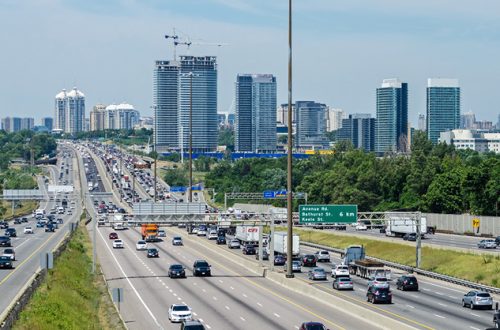
From an early passion for art, Emily Pepper has found her true calling in structural engineering, where she now fuses her artistic creativity with engineering expertise.
But as someone who grew up with an engineer father, Emily had misgivings about ever becoming one herself. “You always have these stereotypes and visions of what an engineer is and is not,” she recalls. “I was like, ‘I’m never gonna go into engineering. I don’t want to wear a hard hat all my life.”
That all changed when Emily realized her passion for art and math could be combined as a structural engineer. “When it actually came time to figure out what I did want to do, I thought, how can I combine my two passions? Initially, I thought I could become an architect, but then I realized engineering had the mathematical challenge I craved.”
After graduating Summa Cum Laude with her BASc in Civil Engineering from the University of Ottawa, Emily’s first internship was with Public Works Canada and ended up being an important turning point in her career.
“My first site experience was working on historic buildings and heritage projects,” she says. “It was awesome. I was potentially working on buildings that I studied in my art history class and coordinating with the masons and carpenters.”
In the years since, Emily’s work has increasingly focused on sustainability; particularly in the use of historic materials and concrete. “Sustainability in engineering is not just about new technologies, but also about learning from the past,” she explains. “Historic materials can teach us a lot.”
Emily further explains that historic materials can help greatly reduce our environmental impact, and that they deliver a win-win scenario for both the environment and the bottom line.
“Communicating sustainability in a tangible way is essential,” she explains. “If we can salvage materials, it may involve more engineering but can save on construction. This approach resonates with clients and architects.”
Emily’s experience with historic buildings is also informed by her time in London, UK where she earned a Master of Science in Advanced Structural Engineering from Imperial College London, graduating with distinction.
“My time at Imperial College London was transformative,” she notes. “The advanced structural engineering program emphasized innovative solutions and sustainability, shaping my approach to engineering.”
Emily’s continued involvement with the Ontario Society of Professional Engineers (OSPE) has also been instrumental in her professional growth. “OSPE has provided incredible networking and upskilling opportunities,” she says. “Through OSPE, I learned about sustainability codes and initiatives, which has shaped my career.”
Emily further highlights the importance of professional organizations like OSPE in supporting engineers. “Professional bodies like OSPE are great for getting your name out there and putting you in situations where you can learn from others,” she says. “It’s reassuring to know that you’re not alone in your struggles. OSPE is great for building confidence and getting a shoe in the door with your ideas.”
One of Emily’s most noteworthy ideas involved analyzing unreinforced masonry tunnels. “I spent two years analyzing masonry arches of various geometries by hand,” she explains, noting that the main challenge was accounting for the soil pressure around the tunnel and getting the analysis to work all the way around the structure.
“It took months of research and collaboration with colleagues to develop a new methodology. I ended up writing a paper about it and won second place in the regional Civil Engineers Research Awards.”
Now as a Heritage Engineer with WSP, Emily finds value in sharing her ideas with multiple mentors and appreciates the diverse perspectives they each bring.
“Having multiple mentors is better because each has their own career progression and biases,” she says. “OSPE has helped me connect with professionals outside my immediate company, which has been invaluable for my development.”
Emily’s journey from art school to engineering underscores the importance of merging diverse interests and skills. Her work in sustainability and heritage preservation showcases how engineers can contribute to a better future by learning from the past.
“Engineering isn’t just about new technologies,” she says. “It’s about finding innovative solutions using what we already know and improving upon it.”




Leave a Comment